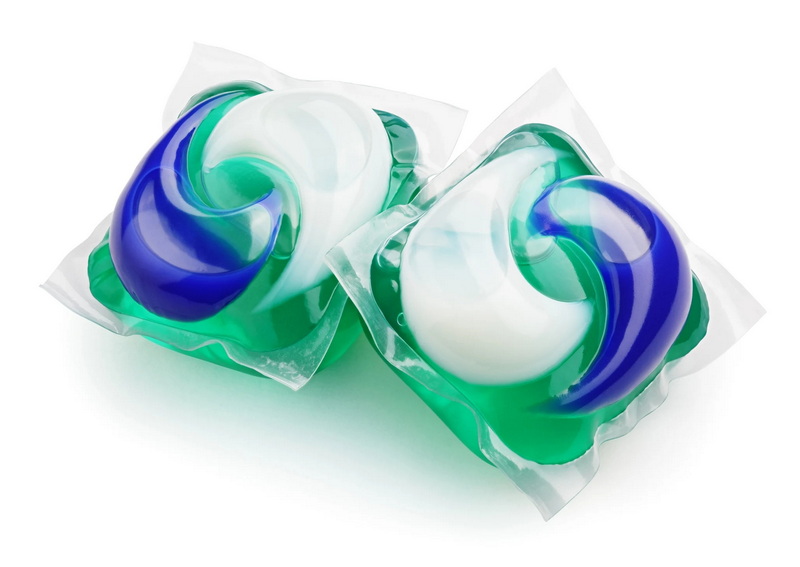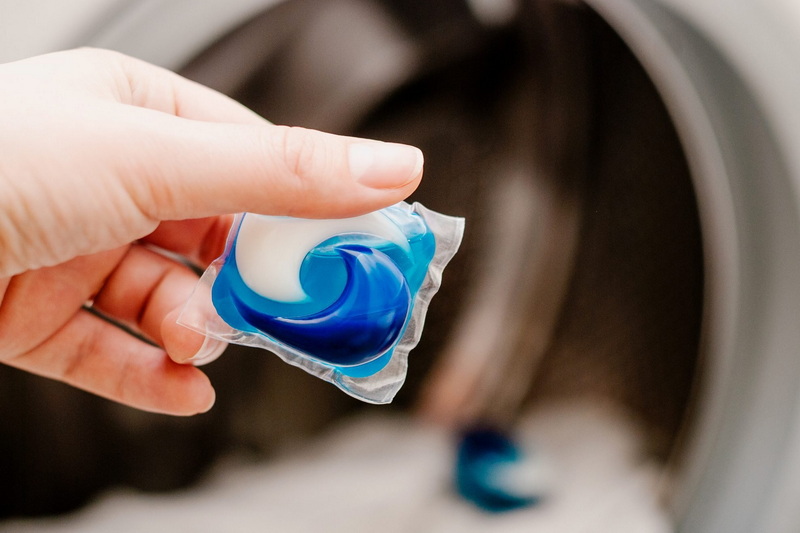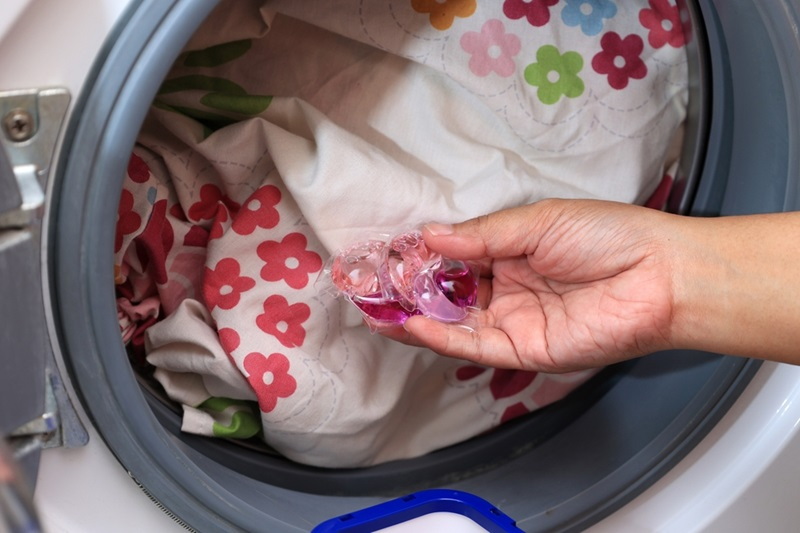Dongguan UFine Daily Chemical Co.,Ltd.
- All
- Product Name
- Product Keyword
- Product Model
- Product Summary
- Product Description
- Multi Field Search
Views: 222 Author: Tomorrow Publish Time: 10-16-2025 Origin: Site











Content Menu
● The Science of Pod Dissolution
● Do Laundry Pods Fully Dissolve Every Time?
● How Effective Are Laundry Pods at Cleaning?
● Environmental Impact of Pods
● Common Issues and Troubleshooting
>> Pods Not Dissolving in HE Washers
● Comparison of Laundry Pods and Traditional Detergents
● Safety and Handling of Laundry Pods
● Future Trends in Laundry Pods Technology
● FAQ
>> 1. Do laundry pods dissolve in cold water?
>> 2. Can laundry pods be used in all washing machines?
>> 3. What causes laundry pods to leave residue on clothes?
>> 4. How should laundry pods be stored to prevent sticking?
>> 5. Are laundry pods environmentally friendly?
Laundry pods have become increasingly popular for their convenience and ease of use. However, many consumers question whether these pods fully dissolve during a wash cycle and if they clean effectively. This article explores the science behind laundry pods, their dissolving process, performance in different washing conditions, and tips to maximize their efficiency.

Laundry pods, also known as detergent pods or capsules, are pre-measured packets containing concentrated detergent, sometimes combined with softeners, stain removers, and enzymes. These pods are designed to dissolve during the wash cycle, releasing their contents to clean clothes thoroughly.
Pods are wrapped in a water-soluble film, typically made from polyvinyl alcohol (PVA), allowing them to dissolve completely in water. The convenience of pods eliminates the need for measuring detergent and reduces spills.
The critical factor in pod performance is the complete dissolution of the pod's film and release of detergent. The PVA film dissolves when exposed to water, ideally dissolving entirely within the first minutes of the wash cycle to ensure the detergent is fully available.
Factors influencing pod dissolution:
- Water Temperature: Warmer water speeds up the dissolution process. Cold water can slow the film from dissolving completely.
- Water Level and Agitation: Adequate water volume and strong agitation help the pod break down. In high-efficiency (HE) washers that use less water and gentler cycles, pods might dissolve more slowly.
- Water Hardness: Hard water with high mineral content can impact how detergent is released and interacts with fabrics.
- Pod Placement: Pods should be placed directly in the drum, not in dispenser trays, to ensure immediate contact with water.
Laundry pods dissolve in most cases, but their efficiency can depend on washing conditions.
- Hot and Warm Water: Pods typically dissolve completely and quickly.
- Cold Water: Pods may dissolve more slowly or incompletely, leading to residue on clothing or in the drum.
- HE Machines: Because these machines use less water and gentler agitation, pods sometimes partially dissolve.
To mitigate incomplete dissolution, some pod manufacturers incorporate special film formulations or advise users to increase water temperature or cycle length.
Laundry pods contain concentrated detergent formulas designed to tackle many types of stains and soils. When properly dissolved, they offer effective cleaning performance comparable to traditional liquid or powder detergents.
Advantages of pods:
- Pre-measured dosing reduces detergent waste and overuse.
- Convenient and portable, increasing compliance with laundry routines.
- Contain multiple active ingredients for stain removal, brightening, and odor neutralizing.
Potential downsides:
- Pods may leave residue if not fully dissolved.
- Some users report pods adhering to fabric if placed incorrectly or if wash water is insufficient.
To ensure the laundry pod dissolves fully and cleans clothes effectively, follow these recommendations:
- Place pods directly in the drum before adding clothes. Pods require immediate contact with water.
- Use a wash cycle with adequate water and agitation. Avoid quick or eco cycles if pods do not dissolve well.
- Prefer warm or hot water temperatures, especially when washing heavily soiled clothes.
- Avoid washing very small loads or running the washer half-empty; a full or moderately filled machine ensures proper water distribution.
- Do not overload the machine, as overcrowding reduces water flow needed for pod dissolution.
- Store pods in a dry place to avoid premature sticking or damage.

Laundry pods are convenient, but concerns exist about their packaging and ingredient environmental impact.
- The water-soluble PVA film is designed to biodegrade, but biodegradation rates vary.
- Concentrated detergents mean less plastic packaging compared to larger detergent bottles.
- Some pods include phosphates or chemicals less favorable for aquatic ecosystems.
Many brands now offer biodegradable pods and formulations with reduced environmental impact.
Residue indicates incomplete dissolution. It can result from cold water washing, short cycles, or insufficient water. To prevent this, increase water temperature or switch to liquid detergent for delicate or cold wash loads.
Humidity or moisture exposure can cause pods to clump or stick, affecting dissolution. Keep pods sealed in their original container in a dry environment.
HE washers with low water usage and gentle tumbling may delay pod dissolution. Use longer wash cycles with warm water or experiment with liquid detergents if problems persist.
| Feature | Laundry Pods | Traditional Liquid/Powder Detergents |
|---|---|---|
| Convenience | Pre-measured, no mess | Requires measuring, possibility of spills |
| Dissolution | Dependent on water conditions | Dissolves well in various conditions |
| Storage | Compact and easy to store | Bulkier packaging |
| Environmental Impact | Water-soluble film, variable biodegradation | More plastic waste from packaging |
| Stain Removal | Formulated for multi-functionality | Can be tailored with additives |
Laundry pods contain highly concentrated detergent and should be handled carefully to avoid accidental ingestion or contact with eyes. Important precautions:
- Keep pods out of reach of children and pets.
- Store in their original container and securely close the lid.
- Do not puncture or cut pods.
- If contact with eyes or mouth occurs, rinse immediately and seek medical advice if needed.
Laundry pod manufacturers are constantly improving their products by:
- Developing films that dissolve rapidly even in cold water.
- Using eco-friendly ingredients with reduced environmental footprint.
- Incorporating enzymes and additives for enhanced stain removal.
- Offering customizable pods with different cleaning functions in one load.
Innovation aims to balance convenience, performance, and sustainability for evolving consumer needs.
Laundry pods provide a convenient, mess-free alternative to traditional detergents, dissolving effectively in most washing conditions. Their water-soluble film releases concentrated detergent that cleans efficiently when used properly. Warm water, adequate agitation, and correct placement ensure pods dissolve fully without residue. By following best practices, consumers can enjoy the benefits of pods while maintaining excellent laundry results. Continued innovation and environmental consideration are shaping the future of laundry pods to be even more effective and sustainable.

Laundry pods can dissolve in cold water, but the process is slower and sometimes incomplete, leading to residue. Warm water is recommended for optimal dissolution.
Most laundry pods are suitable for both traditional and high-efficiency (HE) washers, but HE machines may require longer cycles or warmer water for full pod dissolution.
Residue is caused by incomplete dissolution due to cold water, insufficient water volume, quick wash cycles, or pods being placed improperly.
Pods should be stored in a cool, dry place inside their original container with a sealed lid to avoid moisture making them sticky or clumped.
Laundry pods use water-soluble films that biodegrade, and many brands use eco-friendlier formulas, but some chemicals and packaging still raise environmental concerns.